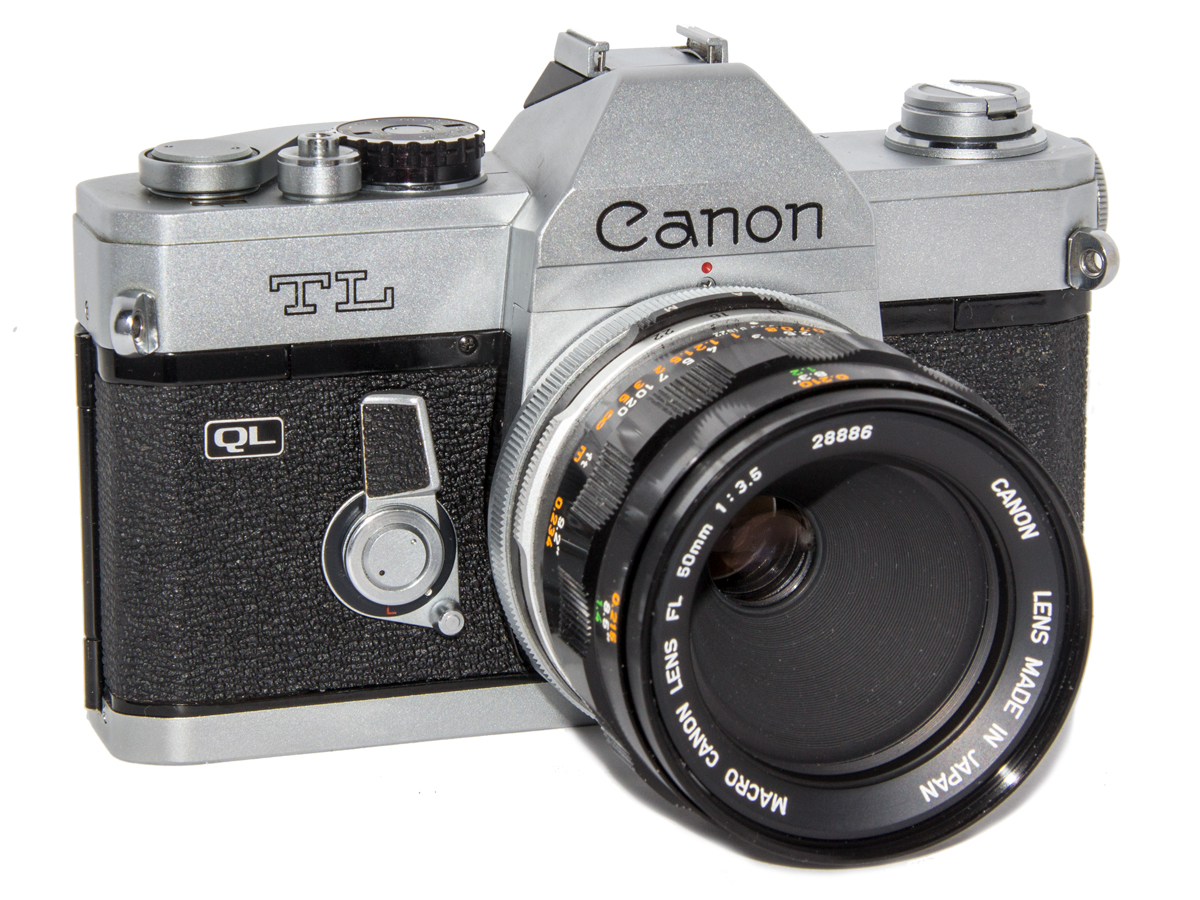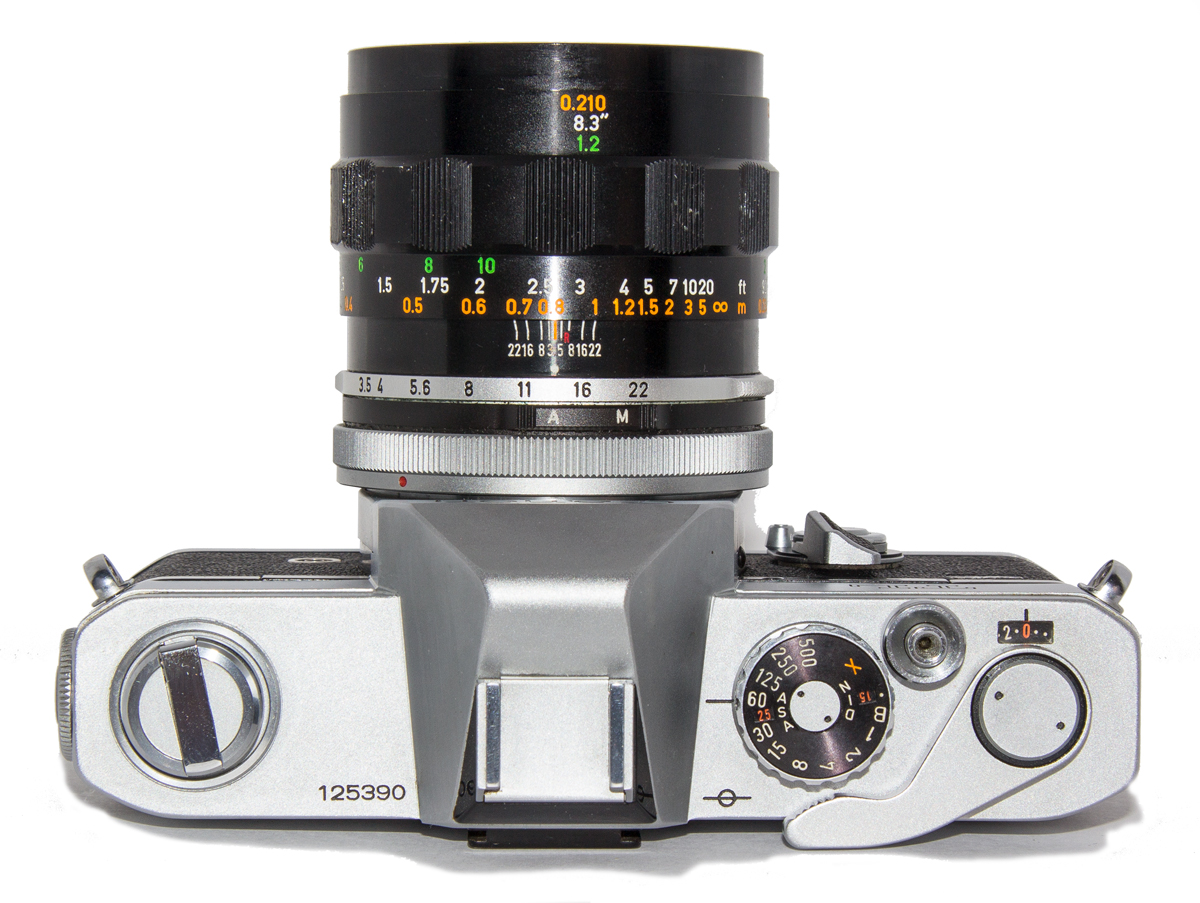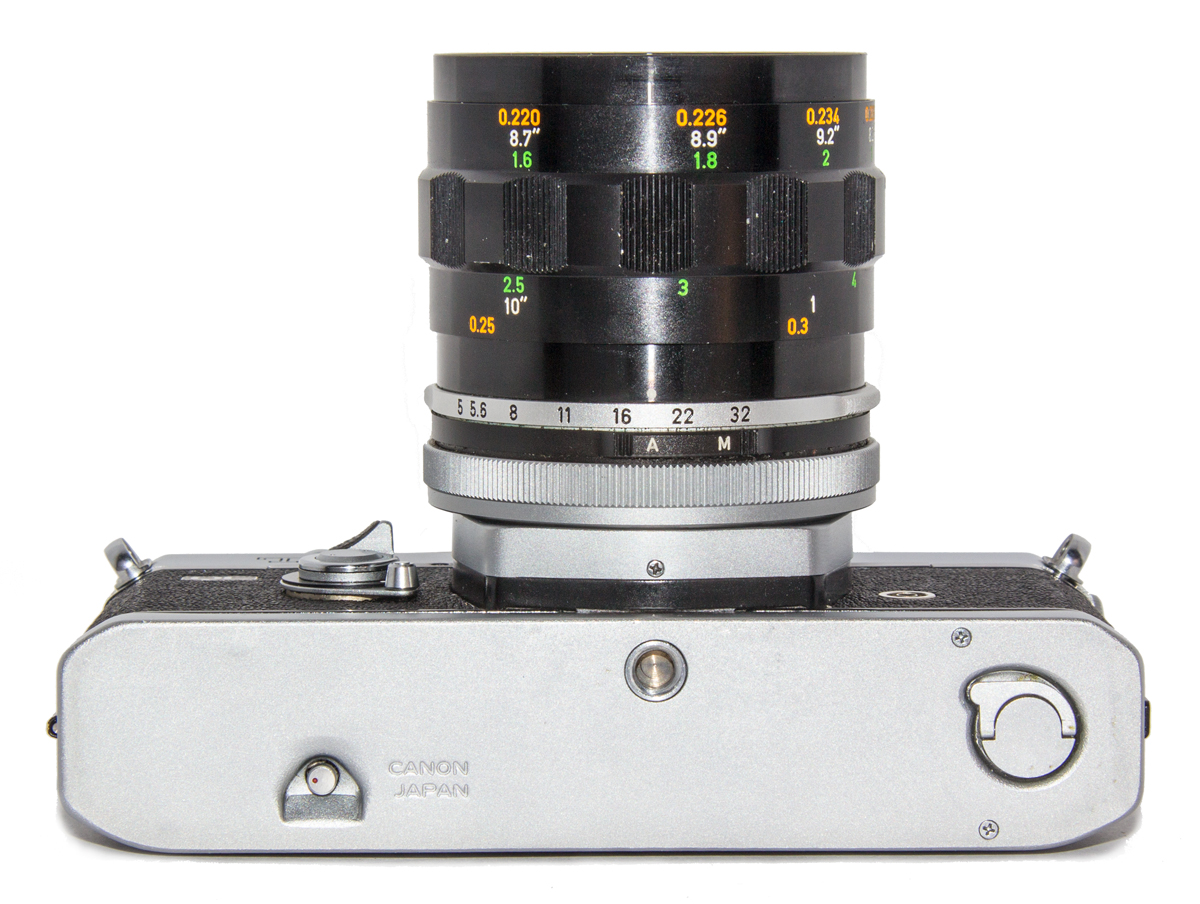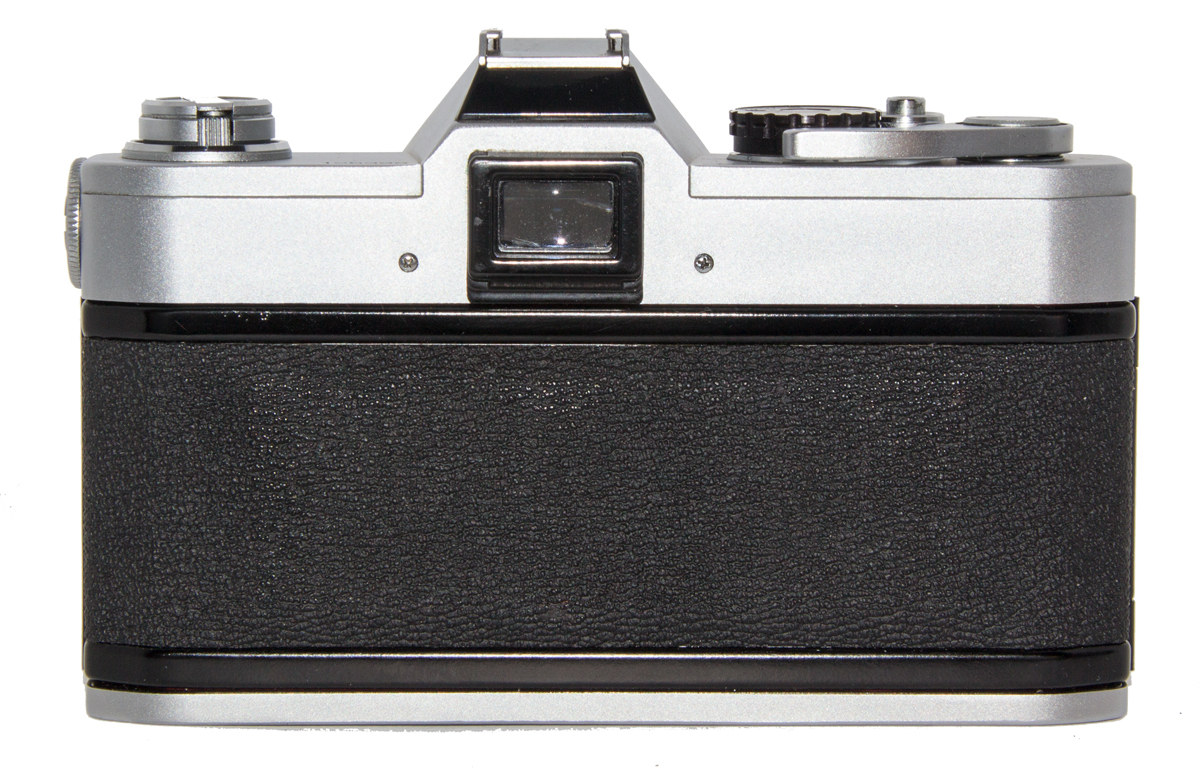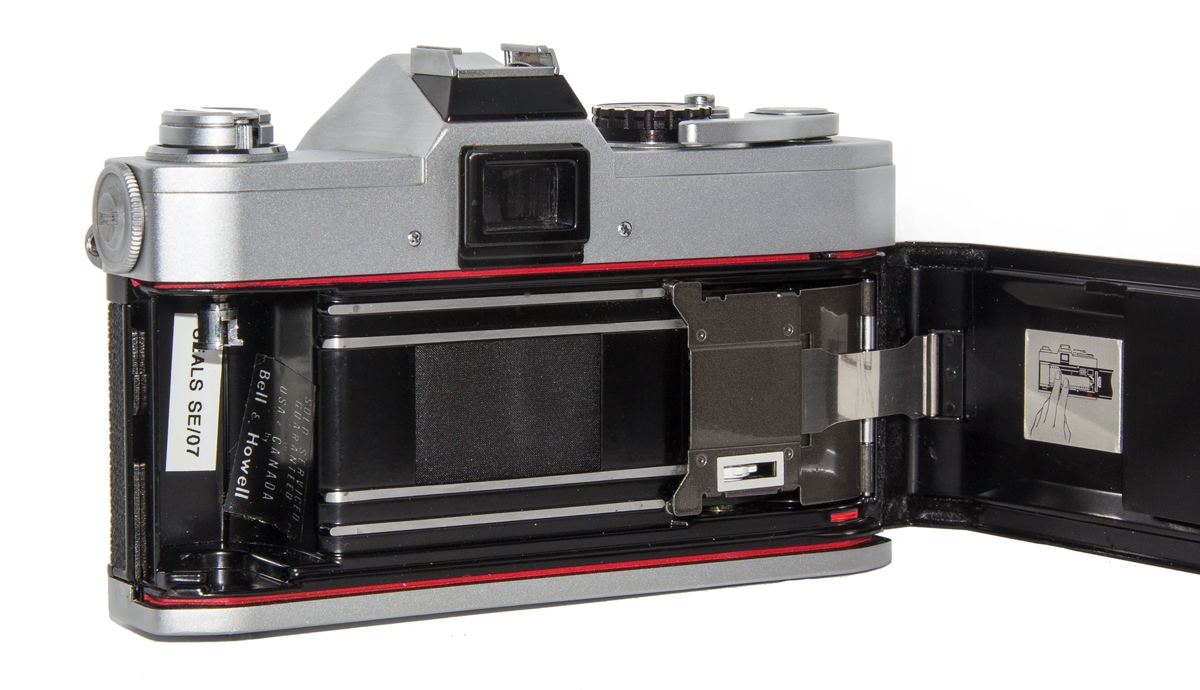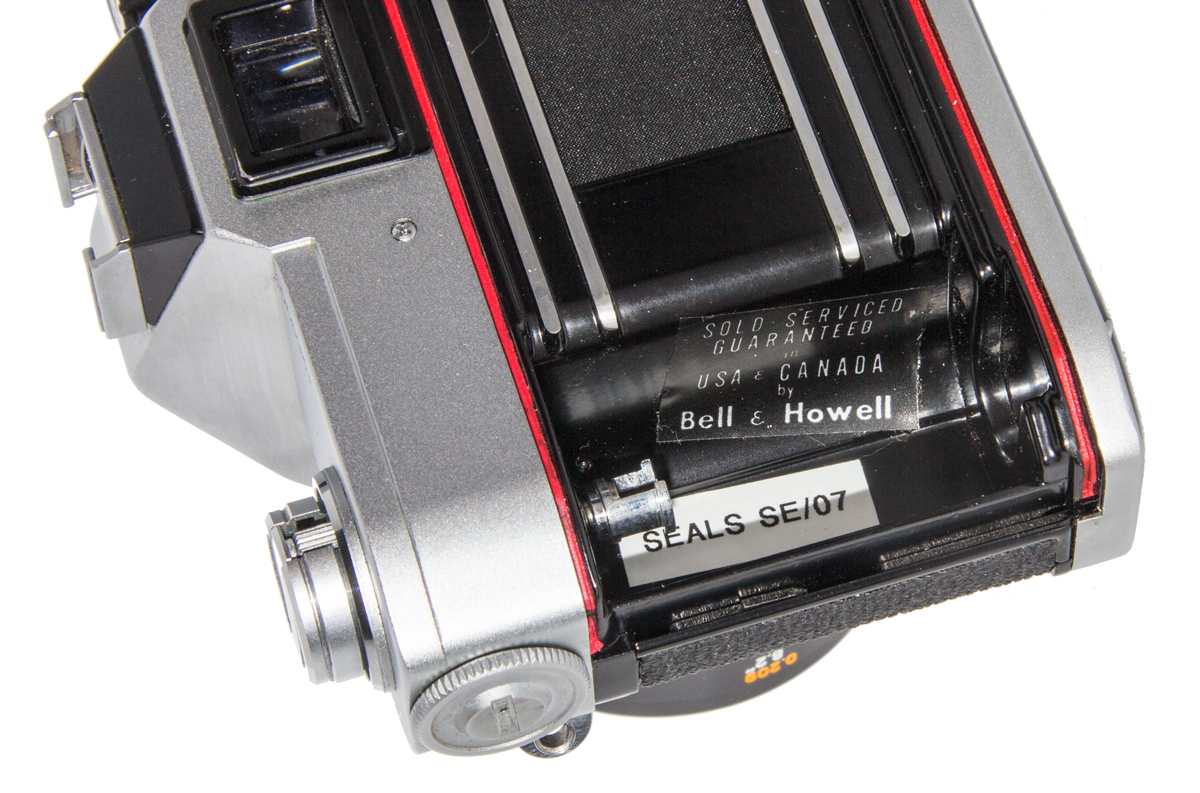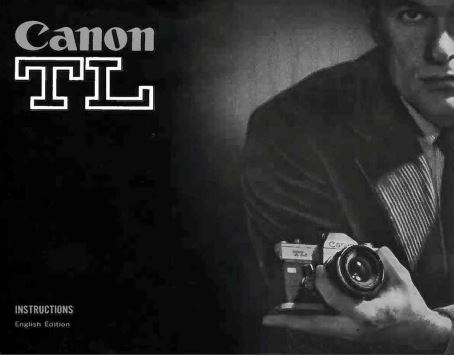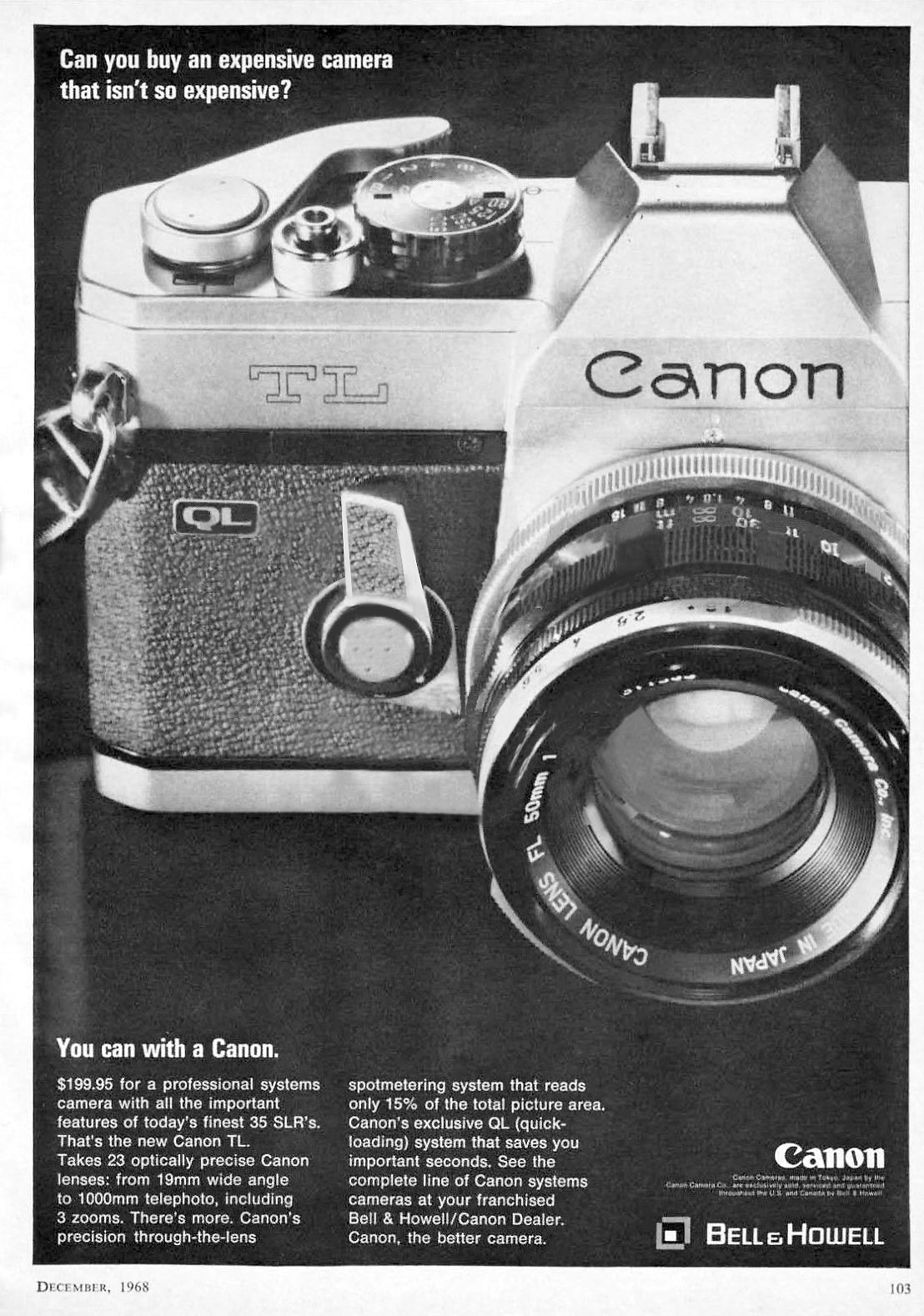This is my Canon TL (Ser. No. 125390) with a Macro FL 50mm f/3.5 (Ser. No. 28886) lens mounted on it.
Canon TL
An Entry Level FT QL
Pick it up and it looks and feels like an
FT QL. Same body, same weight, same quality feel. In fact it is an FT minus a few features. It is often referred to as the cheaper version of the FT but I prefer the term “entry level”. There is nothing “cheap” about this camera.
Introduced in 1967 it was the last of the Canon’s to have the FL lens mount. The Canon Museum web page says that it was produced for the “over seas” market which I assume means out of Japan.
The Canon Museum says that this camera was produced without the QL feature but I have been unable to find a photograph of the TL that does not have the QL system installed. On my camera above note the “QL” sticker on the front disignating the camera as having the “Quick Loading” feature installed.
So what have they done to reduce the price of this camera? Firstly, the top shutter speed is 1/500th. This certainly does not cripple the camera but it is not optimal for sports photography or any application that needs to stop rapid action.
We have a Newsletter
There is a Newsletter for thecanoncollector.com to keep you up to date on what we are posting. Try it!
The TL has no self timer but this is not a problem. The shutter button is threaded for a cable release and will accept an accessory self timer.
The shutter button lock has been left off. Again, for me, no problem. The battery check feature has been eliminated. Maybe inconvenient but not a deal breaker.
The back of the TL is plain to the point of being uninteresting. There is no holder for film information. It is basically the same on the back as the Canon FT on which it is modeled.
Inside the back the TL appears the same as the FT on which it is modeled. The “QL” mechanism is visible on the right end and you can see the replaced light seals which are red in color.
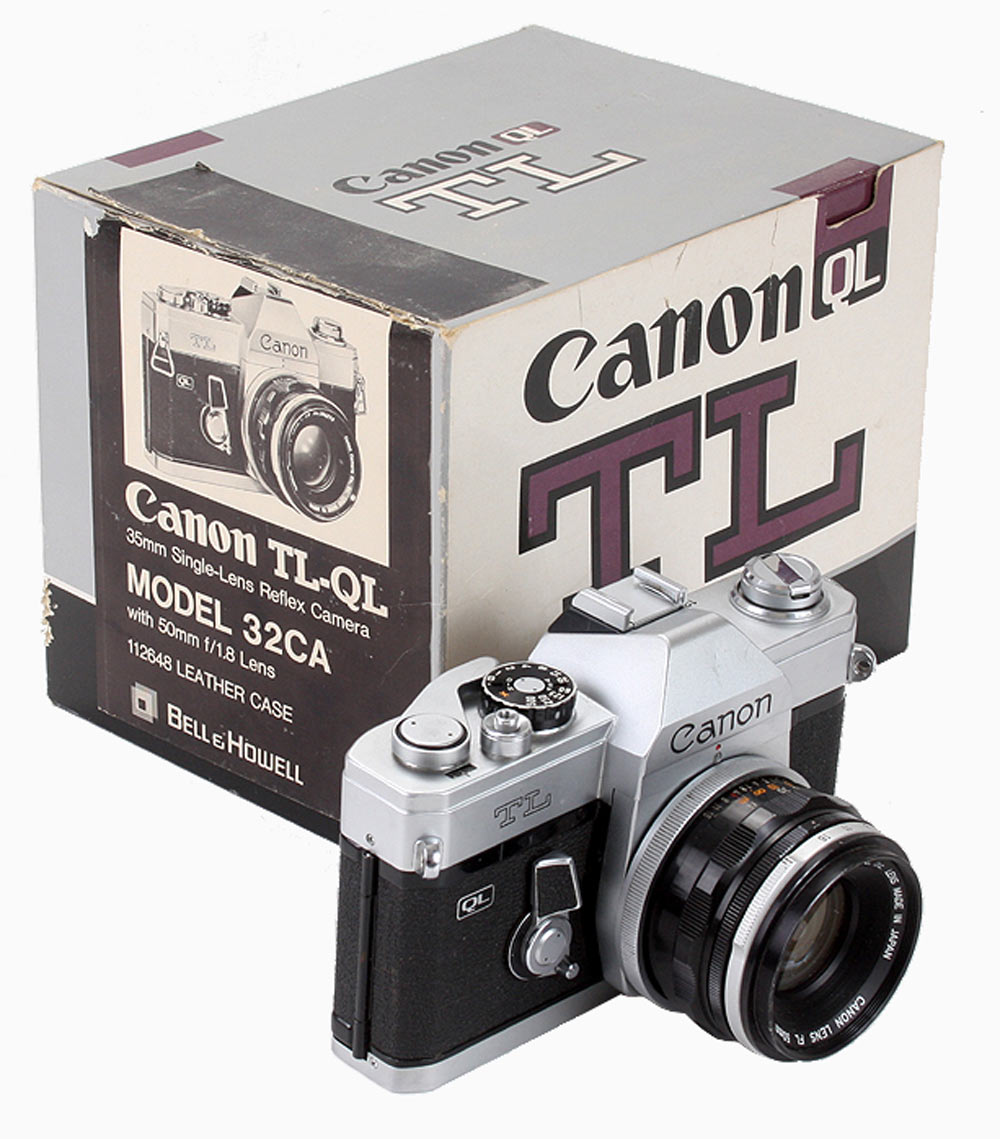
This is the TL with its original box. Notice that it has the “QL” option. I have been unable to find an image of a TL without this option.(Image from Pacific Rim Camera)
mSo what are we left with? The TL is a Canon FT with a few missing minor features. It is still the same solid well built reliable camera and it will accept all of the same lenses. If you think about it, all you really need is a solid film transport, reliably flat film plane, and accurate shutter speeds. If you have those you have a great camera. In all of those respects, what you have here is a Canon FT.
The shutter has horizontally travelling fabric curtains. Flash sync is via the PC Socket on the front of the body for FP bulbs or strobe lights.
The TL was marketed only in chrome finish which was available from February 1968 until it was replaced by the TX in March of 1975. It was apparently created for the export market and not released in Japan.
For the average photographer this is a great film camera. The top shutter speed is adequate for all but the highest speed subjects. The light metering system is the same as found on the FT.
Although the camera is completely manual in operation the light meter requires a PX625 1.35 volt battery which mounts in the battery compartment on the left end of the body. The camera will operate without the battery in place but, of course, the light meter will not work without it. But I never use the built in meter on these old cameras if I can avoid it. I find my hand held Sekonic to be superior and more reliable. These old meters are subject to drifting and tend to be inaccurate.
Also removed is the mirror lockup feature which is seldom used by most people. There are applications where you need that mirror up out of the way but you seldom run into them.
However, this camera has an FL lens mount and so it still has provision for stop down metering. This is achieved by pushing the lever on the front towards the lens. Details on how the metering system works on this camera can be found in the User Manual below.
Here is the Manual for the TL. Pretty standard stuff but an interesting read nevertheless.
An advertisement for the Canon TL in a December 1968 photography magazine.

